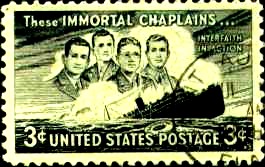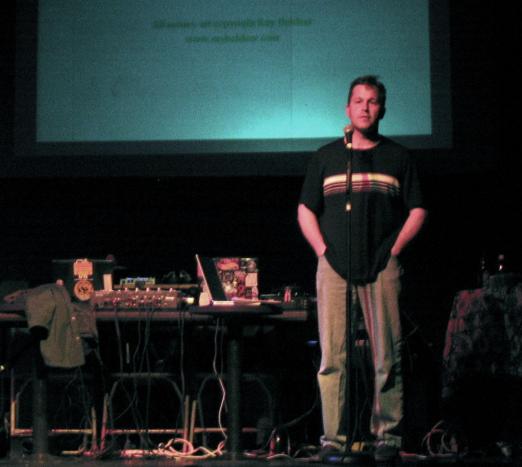We cleaned up a bit and got the children in bed, and then settled down for our Christmas night routines. I take great joy in putting together my commemorative stamp set for the year. Every year since 1979, my mother has bought me the US commemorative stamp set (my brother has been getting it since 1976). She asked if she could stop getting it for us about 15 years ago, thinking we had outgrown such things. My brother and I protested loudly, and mom has diligenlty given us our coveted stamp sets each year since then. And so it is that every Chirstmas night, I assemble the set and enjoy the year's offerings from the hard working people at the US Postal service.
The Postal Service puts a lot of thought and care into the designs of their stamps. Postage stamps reveal what we like to believe is best and most important about America -- through these small pieces of art that we affix to documents that we entrust to the postal service, we celebrate the American experience every day (as is the case for each nation's stamps -- a way of celebrating their own unique heritage). The custom of issuing special commemorative stamps began in 1893. If you've never taken the time to browse through the heritage of US stamps, peruse this index of commemorative stamps from 1847-1970 and explore for yourself.
 As an example to help you understand my enthusiasm, consider the stamps from 1948, which feature one of my favorites -- a commemorative of the 4 military chaplains who gave their lives so that others might escape the sinking of the USS Dorchester. This stamp commemorated faith, heroism, courage, self-sacrifice, and a value for life.
As an example to help you understand my enthusiasm, consider the stamps from 1948, which feature one of my favorites -- a commemorative of the 4 military chaplains who gave their lives so that others might escape the sinking of the USS Dorchester. This stamp commemorated faith, heroism, courage, self-sacrifice, and a value for life.  As I put together the 2005 set, I noticed something missing. Every year, the postal service at Christmas time has issued a "traditional" christmas stamp featuring Mary and baby Jesus (usually a miniature of some great work of art) and a "contemporary christmas stamp" featuring santa, reindeer, and other holiday themes. From time to time they'll celebrate other holidays, such as Kwanzaa, Hanukkah, and Eid.
As I put together the 2005 set, I noticed something missing. Every year, the postal service at Christmas time has issued a "traditional" christmas stamp featuring Mary and baby Jesus (usually a miniature of some great work of art) and a "contemporary christmas stamp" featuring santa, reindeer, and other holiday themes. From time to time they'll celebrate other holidays, such as Kwanzaa, Hanukkah, and Eid. 


What was missing for 2005 was the traditional Holiday stamp -- no Madonna and child. The holiday set was a block of four christmas cookies, one of which was an angel. But this seemed a bit of a letdown after seeing years of Madonna and child stamps. Given this year's flap over "Merry Christmas" vs "Happy Holidays" I was surprised that no-one had brought attention to this omission. I started going back through my collection. I found that in 2003, there was also no Madonna and Child at Christmas, while in 2000 there were no holiday stamps at all! Before that you have to go all the way back to 1974 when there was not a Madonna and child, but a classic Christmas angel.
I did some further research, and to my knowledge, there is no history of issuing holiday stamps of any kind until 1962. Sacred holiday stamps don't appear until 1965 (though there are stamps with sacred themes -- consider the 4 chaplains stamps that I mentioned earlier). There is a lapse in 1969, and then an unbroken string of sacred holiday stamps (mostly Madonna and child, though there are 1 or two Christmas Angels) until 2000, when no holiday stamps, traditional or contemporary, were produced. They were back in 2001, but then in 2003 no traditional and again this year in 2005.
Now this is not really a big deal -- the Postal Service doesn't owe Christians anything -- it's a nicety to have a sacred Christmas stamp. It makes us feel good to see. However, as I said before, postage stamps reflect how a country sees itself, and these recent omissions are ominous: a 30 year unbroken stretch now broken 3 times in the past 6 years simply goes hand in glove with the rapid secularization of our culture. I mean, this is really big news! And all we heard about was "happy holidays" vs. "merry Christmas"?
There are glad tidings for next year: the Postal Service has unveiled their 2006 commemorative stamps, which includes a very attractive sacred stamp (see below)

God bless us, every one!
Soli Deo Gloria
Russell
PS follow-up to interesting links that relate to this story:
From 2004 -- a customer who wanted to buy Madonna and Child stamps.
A link to the Bible Stamp Club -- who knew?
From this November -- Hear what Darleen Click experienced
And see a summary of the discussion on the internet about these stamps. Once again, this made big waves on the blogosphere, but the conventional media missed the story.













